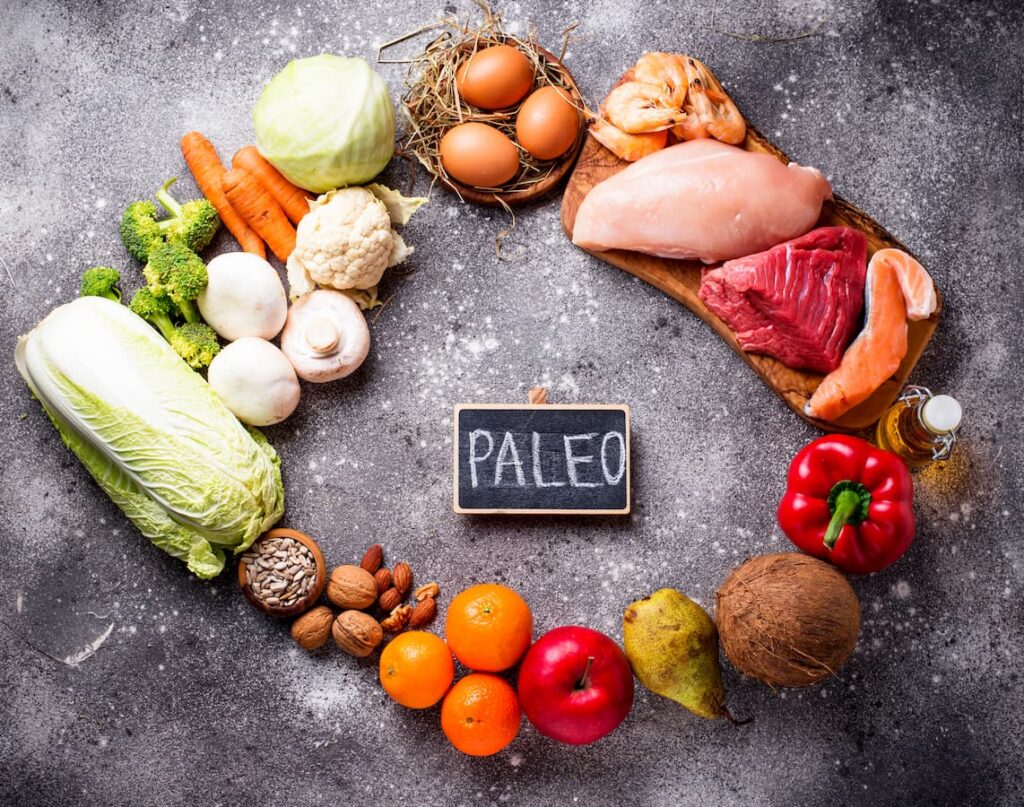The Paleo diet, often referred to as the “Caveman Diet,” encourages eating like our Paleolithic ancestors. It’s based on the premise that for optimal health, we should consume the foods available to our hunter-gatherer forebears. This guide explores the benefits, foods to enjoy, and what to avoid on a Paleo diet. Discover different dietary plans, including Paleo, to see how they compare and decide which might be right for you.
Understanding the Paleo Diet
The Paleo diet revolves around whole, unprocessed foods, emphasizing that modern humans should mimic the eating habits of our ancestors who relied on hunting and gathering. The diet is rooted in the idea that agricultural practices introduced foods that humans aren’t naturally adapted to eat.
Research, including studies from the University of Vermont Medical Center, suggests that following a Paleo diet can aid in weight loss, reduce blood pressure, and help control blood sugar levels. It also increases intake of potassium—which supports kidney and muscle function—healthy fats, and proteins. Significantly, it cuts out processed foods, potentially decreasing the risk of diabetes and cardiovascular diseases.
A core component of the Paleo diet is meal preparation with whole, unprocessed foods. For practical tips on meal prepping, check out our guide to healthy meal prepping, which can help you organize and prepare your meals efficiently.
What You Can Eat on a Paleo Diet
Vegetables:
A staple in the Paleo diet, vegetables should be varied and abundant. Paleo-friendly options include kale, carrots, Brussels sprouts, peppers, asparagus, and beets.
Fruits:
Fresh fruits like berries, apples, bananas, peaches, oranges, and melons are excellent for snacking or as part of a meal.
Protein Sources:
Choose unprocessed options. Organic, grass-fed meats and wild-caught fish are ideal. Recommended choices include turkey, chicken, pork, lamb, beef, shellfish, salmon, and trout.
Eggs:
Opt for pastured, omega-3 enriched, or free-range eggs.
Nuts and Seeds:
Incorporate almonds, walnuts, sunflower seeds, and pumpkin seeds for a healthy dose of fats and proteins.
Healthy Fats and Oils:
Use unprocessed oils such as coconut oil, avocado oil, olive oil, and tahini in your cooking.
Foods to Avoid on the Paleo Diet
Processed Foods:
Steer clear of any frozen meals, packaged snacks, and any food that contains preservatives.
Dairy Products:
Traditional Paleo guidelines suggest avoiding most dairy, though some adaptations allow for full-fat versions like butter and certain cheeses.
Grains:
This group includes wheat, oats, rice, barley, and other cereals.
Legumes:
Avoid black beans, soybeans, lentils, chickpeas, and peanuts (which are technically legumes).
Sugars and Artificial Sweeteners:
Exclude candy, baked goods, fruit juices, and sodas from your diet.
Refined Oils:
Avoid oils like soybean, grapeseed, and sunflower, which are processed and not in line with Paleo principles.
Adapting Paleo to Modern Diets
It’s important to note that some contemporary interpretations of the Paleo diet may include legumes and grains based on emerging research suggesting our ancestors might have consumed these foods. Always consider your personal dietary needs and consult with a healthcare provider before making significant changes to your diet, particularly if you have health conditions or nutritional concerns.
Incorporating a variety of Paleo-friendly recipes into your diet is essential. For some culinary inspiration, visit our recipes section, where you can find dishes that can be adapted to fit your diet or are already compliant.
By focusing on natural, unprocessed foods and avoiding what’s not recommended, the Paleo diet offers a way to return to the basics of eating, which many find beneficial for their health.
